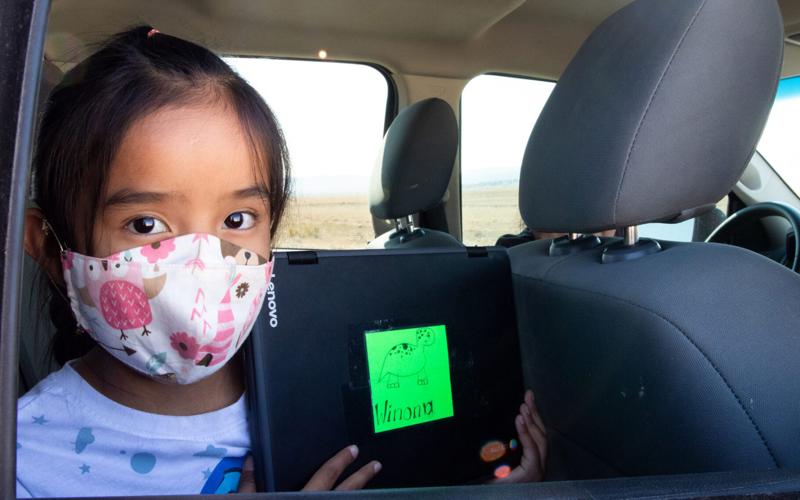WASHINGTON — The Treasury released $99.4 million in broadband funding to Arizona Tuesday, money that officials said could bring broadband internet service to an estimated 127,807 households and businesses around the state.
It is the first half of $190 million the state is expected to receive as its share of a $10 billion pandemic-era federal Capital Projects Fund, a program for “critical capital projects that enable work, education and health monitoring in response to the public health emergency.”
Gene Sperling, senior adviser to President Joe Biden and coordinator for the American Rescue Plan, called the COVID-19 pandemic a “national teaching moment” that showed how vital accessible internet is to Americans, regardless of social class. Providing such funding is “uncontroversial,” he said.
“(It’s) not just that you need it at libraries, not just in schools, not just in each classroom, not just in some homes, but strong, affordable broadband enough for every family to be able to work from home and do school from home,” Sperling said.
That was echoed Tuesday by David Lujan, president of the Children’s Action Alliance in Arizona, who said a lack of broadband access has especially hurt Arizona’s Indigenous and rural communities.
“So much of our lives are tied to the internet now. And we’ve seen that even heightened during the pandemic and then continuing on beyond the pandemic,” Lujan said. “So when families or communities do not have that same level of access, then they’re often shut out of many opportunities.”
Arizona was one of three states to get funding Tuesday with Tennessee, which received $185 million to extend service to 50,000 households, and Wyoming, which got $70.5 million to provide broadband to 11,700 customers. Since the program started last summer, 33 states have received all or part of their expected allocation from the program.
Grants in Arizona will be divided between the Arizona Broadband Development Rural Infrastructure Grant program — for projects in the state’s 13 rural counties — and the Arizona Broadband Development Urban Infrastructure Grant program in Maricopa and Pima counties.
Sen. Kyrsten Sinema, I-Ariz., who Sperling called one of the “principal architects” of the legislation behind the program, said the urban-rural split is especially important in a state like Arizona.
“It helps ensure that communities that have long been overlooked and underserved by the federal government, including tribal communities throughout Arizona, have the opportunity to apply for and receive their fair share,” Sinema said during the White House call announcing the grants.
Any service provider that gets money from the Capital Projects Fund has to agree to participate in the Federal Communications Commission’s Affordable Connectivity Program, which provides a discount of up to $30 a month for broadband service to eligible households and $75 per month to households on tribal lands.
Funding for the FCC and the Treasury programs were included in the American Rescue Plan and the Bipartisan Infrastructure Law. Those programs together are “providing a significant down payment on federal broadband investment,” said Jacob Leibenluft, the Treasury’s chief recovery officer, during the White House call.
“We expect to increase access to high speed internet and reduce broadband bills for Americans across the country,” Leibenluft said.
Sperling said the project will help ensure that high-speed internet remains a “basic measure that every American family had to have to have equal educational and economic opportunity.”
Sinema said she has seen how a lack of broadband hurt Arizonans during the pandemic, recalling how children sat outside a South Phoenix McDonald’s and a Globe public library to get reliable internet access to do their schoolwork.
“Without solid and strong connectivity, we saw that Arizona kids couldn’t have access to the education they needed,” she said. “There were hardworking Arizonans who weren’t able to work, there were employers who struggled to maintain their businesses and, importantly, seniors in Arizona couldn’t access telehealth services.”
Lujan welcomed the funding, saying “any resources are good resources” if it means that people in rural and low-income communities won’t have to give up on getting help at a time when “government services these days, and even private services, are focusing primarily on serving people through the internet.”
“If you’re in rural communities, your only other alternative — often because they often don’t have government offices in many of these rural communities — is to drive hundreds of miles away to Phoenix or to wherever the nearest government office is,” Lujan said.
Vice President Kamala Harris announced the Biden administration is making $1 billion in federal grants available to help close the "digital divide" and expand the availability of high speed internet on tribal lands.





